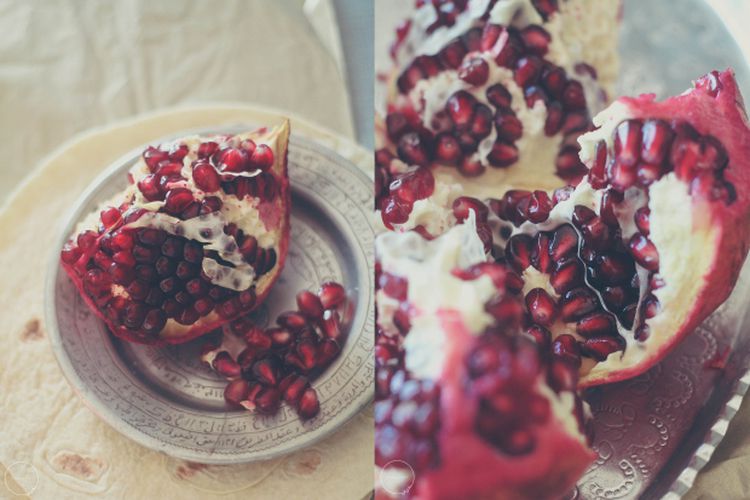One-Pot Wonders
Iranian Fesenjaan
- Serves 6
Author Notes
As many of you celebrate Christmas and Hanukkah in late december, most of Iranians celebrate Yalda. Yalda is the celebration of the winter solstice, the longest night of the year; Iranians call it Shab-e Chelleh (night of forty) or Shab-e Yaldā (yalda night). In Iran is celebrated between the last day of Azar and the first day of Dey (december 20, 21 or 22 of each year).
Fesenjaan is a perfect wintry family dish which my grandma uses to cook during winter and especially for Yalda. This stew is made with poultry, pomegranate paste, walnuts and sugar and is usually served with the persian rice. Fesenjaan is one of those dishes that has some tips and tricks and, above all, it has patience as main ingredient. You can serve it in tree ways: sweet, sweet&sour or sour. Depending on how you like it, you can balance its sweetness and sourness. In Italy where I live in the past 8 years, during winter time and especially for Christmas, Italians traditionally cook capon. Capon has a very rich gamy flavor, it’s not as fat as duck and its meat is softer that chicken. So I decided to mix up some "winter traditions" and cook my "Fesenjaan with capona". For the sauce instead I used my lovely and outstanding pomegranate paste from Abyaneh. A small village close to Kashan, Iran. In Europe & USA, you can find pomegranate paste or molasses in Persian, Asian or Indian shops. Hope you enjoy the recipe. x —Noghlemey
Ingredients
-
1700 grams
capon or chicken
-
1 cup
extra virgin olive oil
-
1 tablespoon
butter
-
1 piece
large size white onion
-
2 pieces
scallions
-
1 piece
carrot
-
1 piece
celery
-
1 piece
large size apple
-
1 piece
medium size pomegranate
-
1 teaspoon
turmeric
-
1/2 teaspoon
saffron
-
1/2 teaspoon
freshly ground black pepper
-
1 tablespoon
salt
-
2 pieces
bay leaves
-
500 milliliters
water
-
150 grams
walnuts
-
120 grams
brown sugar
-
240 grams
pomegranate paste or molasses
Directions
- When you buy your poultry, if you don’t know how to do it yourself, ask to clean and cut it into pieces. Blend the walnuts to the size of breadcrumb and set aside. * In my family we use to keep 1/3 coarser to have a better bite. Some others like it very fine grained, so it’s up to your taste.
- Back to the kitchen; place the onion, carrot, celery, scallion and half apple in the mixer and blend them into very small pieces
- Place a pan on medium-low heat and add a splash of olive oil, when is hot, add the onion mixture and toast them on low heat until soft and translucent
- Meanwhile heat a griddle pan or wide frying pan on high-medium heat and place the capon pisces on it, sear them until golden-brown
- When they’re ready place them in the pan with the onion mixture, bay leaves and small piece of pomegranate to give a capon a better taste. Turn them around and mix them well with the mixture. Season with salt, pepper, turmeric and saffron, add about 500 ml (or more) water and bring to boil. When it starts boiling, reduce the heat, cover and let it cook for about 30-40 minutes or until is easy to separate the meat from the bones. * The meat should not be so tender to fall apart and completely cooked because in the second cooking part it would dissolve into the sauce.
- Take the capon pieces out from the broth and let them cool for 10 minutes. Using a fork pull the meat from the bones trying to keep it in big chunks. Strain the broth and set aside.
- In a clean pan add the walnuts and toast them on medium heat for about 20 seconds, add the capon broth, pomegranate paste, half grated apple, brown sugar and the meat. Gently stir to mix the sauce and bring it to a boil. Cook the Fesenjaan for 20 minutes partially covered; check the seasoning, add more pomegranate paste if you like yours more sour or add more brown sugar if you like it sweeter. Continue to cook it un-covered and stir occasionally until the sauces gets dark in color, the walnuts oil comes atop and the broth gets ticker. * The dosage of pomegranate paste & brown sugar really depends on how you like your sauce. It also depends on how sweet or sour is your pomegranate paste. The best thing to do is to gradually start with a minimum amount, check after few minutes and increase it until the right balance for your taste is reached. Then let it cook add.
- Serve the Fesenjaan with Persian rice, fresh herbs and yogurt dip. You also can make a lovely ticker sauce and prepare a juicy and tasty roll with flat bread, some arugula and fresh pomegranate seeds. *The Correct spelling of this dish is Fesenjaān but in the informal we usually say Fesenjoon.



See what other Food52ers are saying.